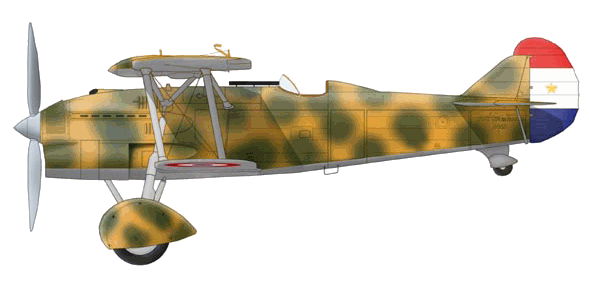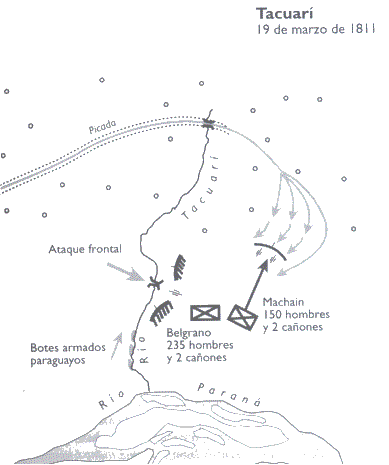

Paraguayan Wars
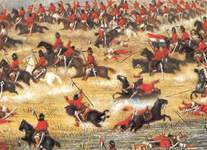
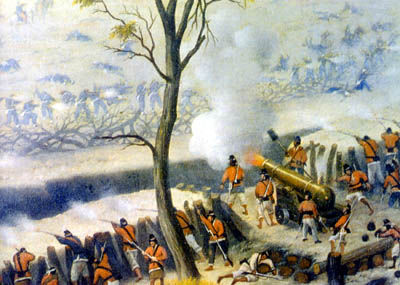
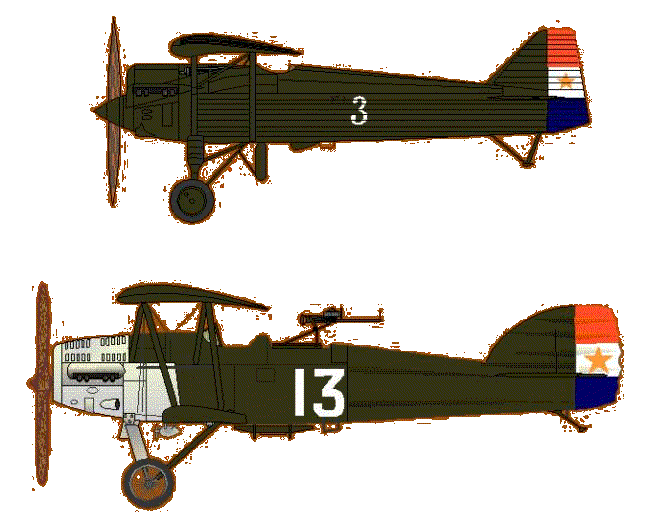
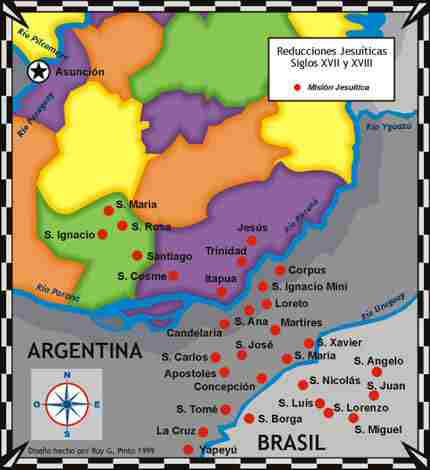
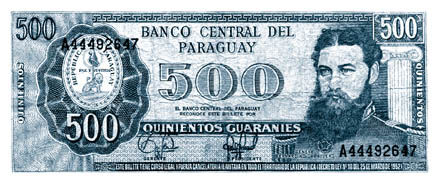
Wars of the Jesuits in Paraguay / Argentina
Three Jesuits--an Irishman, a Catalan, and a Portuguese--arrived in 1588 from Brazil. Because they already believed in an impersonal, supreme being, the Guaraní proved to be good pupils of the Jesuits. In 1610 Philip III (1598-1621) granted extensive powers to Jesuit Father Diego de Torres to implement a new plan that foresaw an end to the encomienda system. This plan angered the settlers, whose lifestyle depended on a continuing supply of Indian labor and concubines. The settlers' resistance helped convince the Jesuits to move their base of operations farther afield to the province of Guayrá in the distant northeast. After unsuccessful attempts to "civilize" the recalcitrant Guaycurú, the Jesuits put all their efforts into working with the Guaraní. Organizing the Guaraní in reducciones (reductions or townships), the fathers began a system that would last more than a century. In one of history's greatest experiments in communal living, the Jesuits had soon organized about 100,000 Guaraní in about 20 reducciones, and dreamed of a Jesuit empire that would stretch from the Paraguay-Paraná confluence to the coast and back to the Paraná headwaters. The new Jesuit reducciones were unfortunately within striking distance of the Mamelucos, the slave-raiding, mixed-race descendants of Portuguese and Dutch adventurers. The Mamelucos were based in Sâo Paulo, Brazil, which had become a haven for freebooters and pirates by the early 1600s because it was beyond the control of the Portuguese colonial governor. The Mamelucos survived mostly by capturing Indians and selling them as slaves to Brazilian planters. Having depleted the Indian population near Sâo Paulo, they ventured farther afield until they discovered the richly populated reducciones. The Spanish authorities chose not to defend the settlements. Spain and Portugal were united from 1580 to 1640. Although their colonial subjects were at war, the governor of Rio de la Plata Province had little incentive to send scarce troops and supplies against an enemy who was nominally of the same nationality. In addition, the Jesuits were not popular in Asunción, where the settlers had the governor's ear. The Jesuits thus had little means to protect themselves from the depredations of the "Paulistas," as the Mamelucos also were called (because they came from Sâo Paulo). In one such raid in 1629, about 3,000 Paulistas destroyed the reducciones in their path by burning churches, killing old people and infants (who were worthless as slaves), and carrying off to the coast entire human populations, as well as cattle. Their first raids on the reducciones netted them at least 15,000 captives. The Jesuits took drastic measures. Under the leadership of Father Antonio Ruíz de Montoya, as many as 30,000 Indians (2,500 families) retreated by canoe hundreds of kilometers south to another large concentration of Jesuit reducciones near the lower Paraná. About 12,000 people survived. But the retreat failed to deter the Paulistas, who continued to raid and carry off slaves until even the reducciones far to the south faced extinction. The Paulista threat ended only after 1639, when the viceroy in Peru agreed to allow Indians to bear arms. Welltrained and highly motivated Indian units, serving under Jesuit officers, then bloodied the raiders and drove them off. Victory over the Paulistas set the stage for the golden age of the Jesuits in Paraguay. The reducciones exported cotton and linen cloth, hides, tobacco, lumber, and above all, yerba maté.The Jesuits were able to render considerable service to the crown by supplying Indian armies for use against attacks by the Portuguese, English, and French. During the 1720s and 1730s, Paraguayan settlers rebelled against Jesuit privileges and the government that protected them. Although this rev
From: Missions district of Paraguay / Argentina
Web Site: countrystudies
Triple Alliance battles 1864 - 70 Thursday, 10/4/07, 9:34 AM
Battle of Riachuelo - June,1865 Battle of Jataí or Yatay - August, 1865 Battle of Estero Bellaco - May, 1866 Battle of Tuyuty or Tuiutí - May, 1866 Battle of Curupaity - September, 1866 Siege of Humaitá - November, 1866 until August, 1868 Battle of Ytororó or Itororó - December, 1868 Battle of Avahy or Avaí - December, 1868 Battle of Lomas Valentinas - December, 1868, fought in two days. Battle of Peribebuy or Peribebuí - August, 1869 Battle of Acosta Ñu or Campo Grande - August, 1869
Battles of the War_of_the_Triple_Alliance 1864 - 70 Thursday, 10/4/07, 9:32 AM
Mato Grosso ¿ Rio Grande do Sul ¿ Corrientes ¿ Riachuelo ¿ Jataí ¿ Tuyutí ¿ Curupaity ¿ Piquissiri ¿ Itororó ¿ Avaí ¿ Campaign of the Hills ¿ Cerro Corá ¿ Acosta Ñu
From: Paraguay
Web Site: Wikipedia
Battles of the Triple Alliance War 1864 ¿ 70 Thursday, 10/4/07, 9:10 AM
From: Brazil
Web Site: Ulysses Narciso
The Chaco War Thursday, 10/4/07, 8:37 AM
The Gran Chaco is the most inhospitable part of the inhospitable Chaco Boreal, a largely uninhabited, 250,000 sq-mi region west of the Paraguay River and east of the foothills of the Andes in Paraguay, Bolivia, and Argentina. It is an arid, semi-desert, where some of the highest temperatures recorded in South America are encountered. In the west, near the mountains, the Gran Chaco is a flat, sparsely vegetated, waterless plain. Further east it is a thick, dry, almost impassable thornbrush jungle punctuated by dense stands of quebracho trees and grassy clearings. There are few people, but myriad biting, stinging insects and many tropical diseases. Prior to 1928, the region's only real value was the tannin extracted from its quebrachos and the meager grazing it provided for cattle. Such was the unlikely bone of contention in South America¿s bloodiest, twentieth-century war.
From: west of the Paraguay River and east of the foothills of the Andes
Web Site: Chandelle
The Paiagua Indian wars in eighteenth century Paraguay. Friday, 9/21/07, 2:45 PM
During the annual monsoons flotillas of gold- miners traveled the bloated rivers, but in 1725 the Paiagua annihilated a convoy of two hundred people near the mouth of the Chanes River. They continued to attack each year, and a major battle took place in June 1730 when 400 people from Cuiaba transporting 60 arrobas (900 kilos) of gold were ambushed by hundreds of Paiagua; the battle lasted 29 hours, and most in the flotilla were killed. King Joao V issued proclamations of a just war and authorized the enslavement of captives, and in 1734 Manoel Ruiz de Carvalho led 842 men in 28 war- canoes from Cuiaba. After killing forty Paiagua sentries in their camp, they ambushed the Paiagua using 200 muskets. They slaughtered 600 Paiagua and sent 240 captives to be slaves in the mines. Yet during the 1735 monsoon the Paiagua killed or captured all but four people in a convoy of fifty canoes. The attacks became less frequent, but they went on until the 1780s when a few remaining Paiaguas took refuge with the Spaniards on an island reservation near Asuncion

